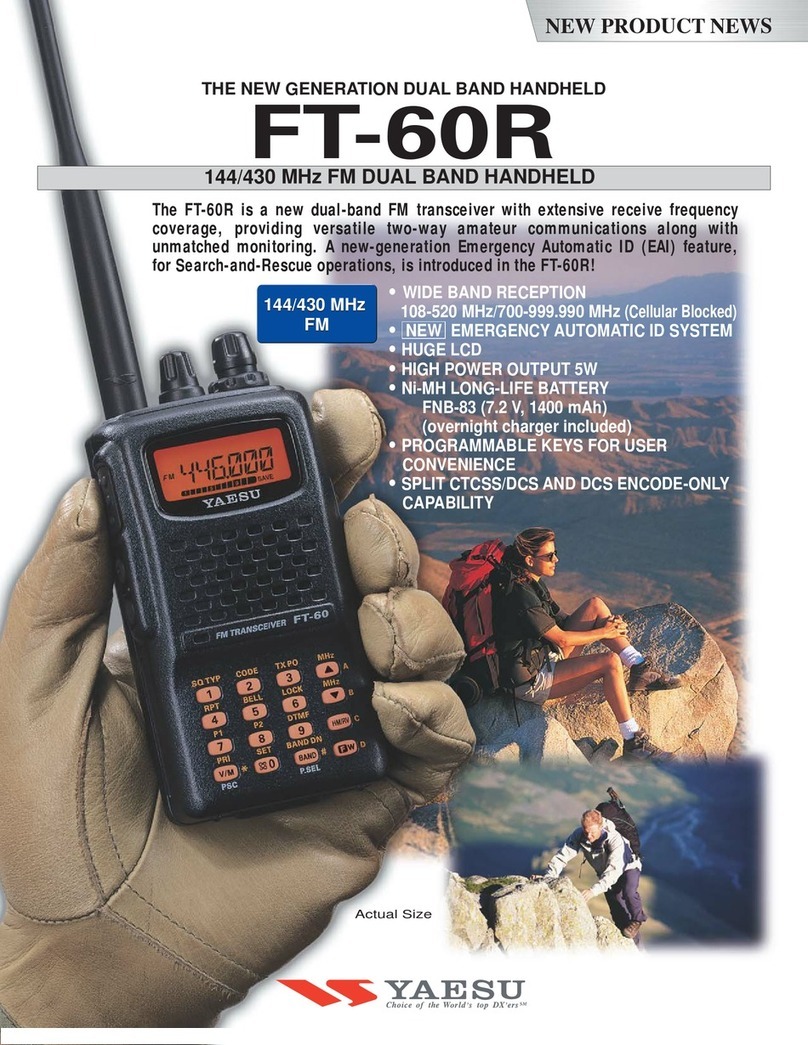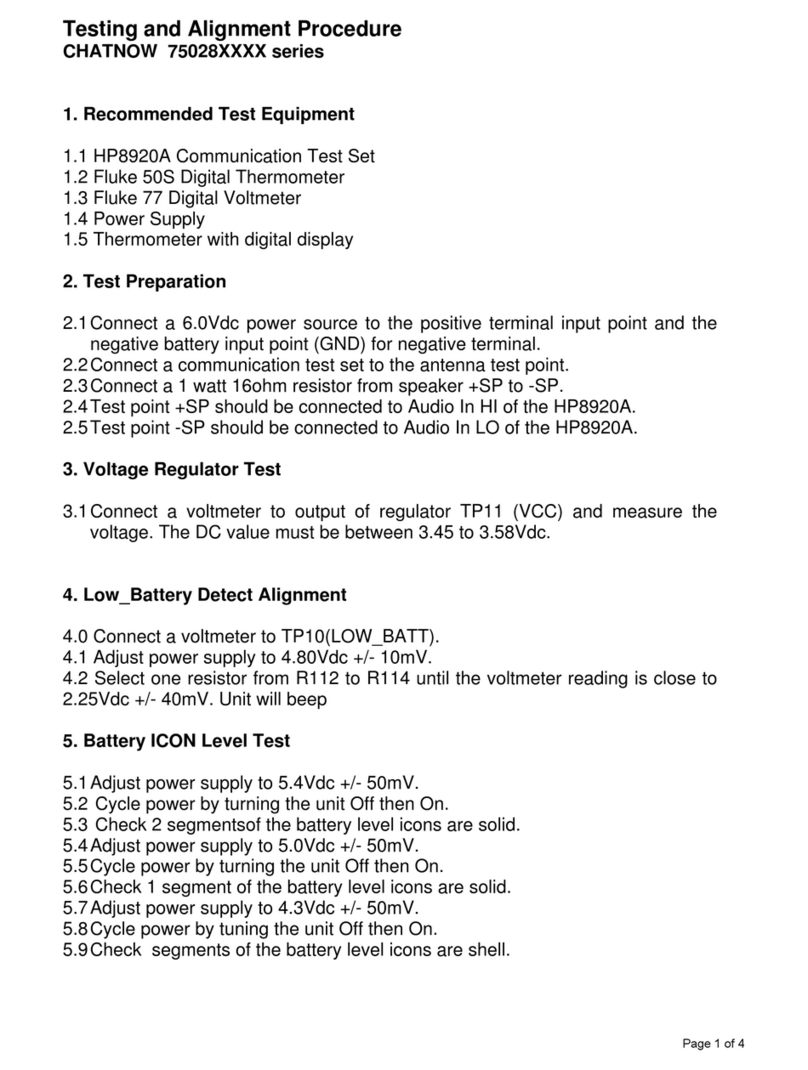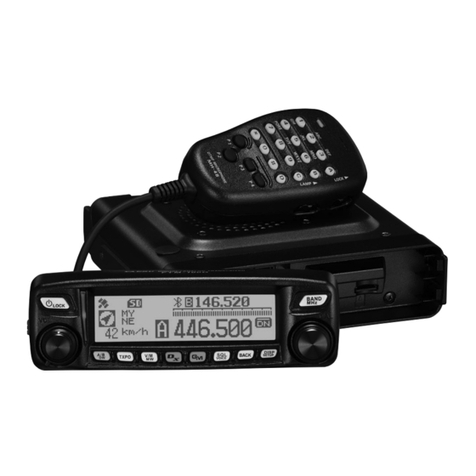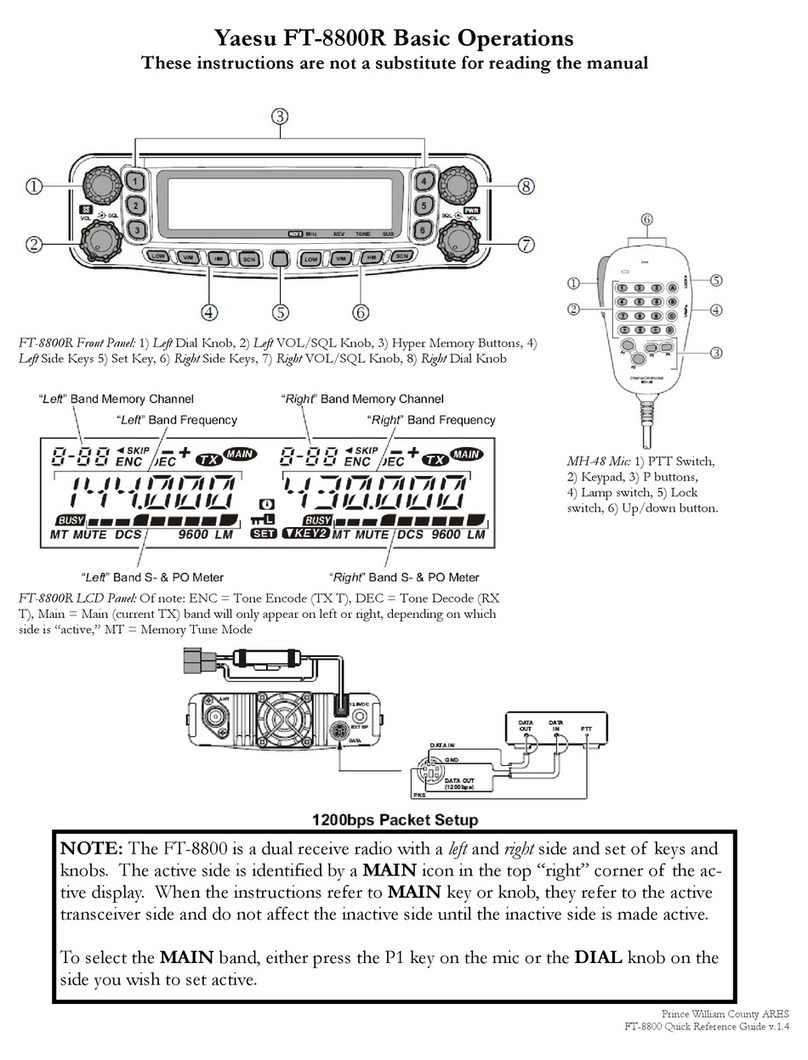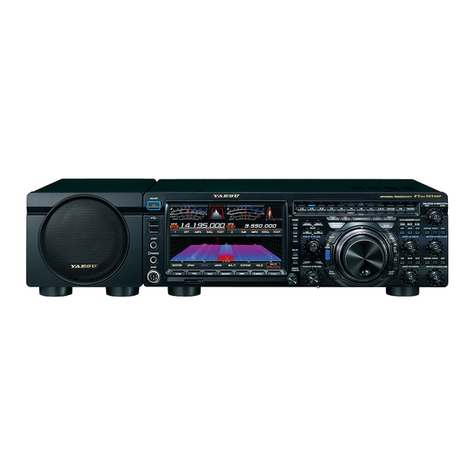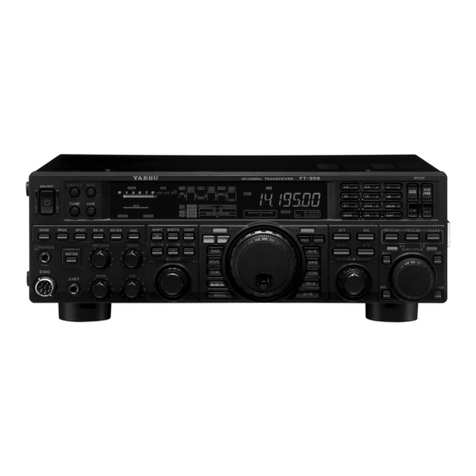
Contents
Scanning .......................................................... 36
VFO Scanning .............................................. 37
Manual VFO Scan ................................... 37
Programmed VFO Scan ........................... 37
Memory Scanning ........................................ 38
How to Skip (Omit) a Channel
during Memory Scan Operation .............. 38
Preferential Memory Scan ....................... 39
Memory Bank Scan ................................. 40
Programmable (Band Limit) Memory Scan
(PMS) ........................................................... 41
“Priority Channel” Scanning
(Dual Watch) ................................................ 42
Automatic Lamp Illumination
on Scan Stop ................................................ 44
Band Edge Beeper ........................................ 44
Weather Alert Scan ...................................... 45
Emergency Channel Operation .................... 46
Smart Search Operation ................................ 47
Internet Connection Feature ......................... 48
ARTS
(Automatic Range Transponder System)
....... 50
DTMF Operation ........................................... 53
DTMF Pager Operation ................................ 55
Miscellaneous Settings ................................... 58
Password ...................................................... 58
Programming the Key Assignment .............. 59
Changing the Channel Steps ........................ 59
Receive Battery Saver Setup ........................ 60
TX Battery Saver .......................................... 60
Disabling the TX/BUSY Indicator .............. 61
Automatic Power-Off (APO) Feature .......... 61
Transmitter Time-Out Timer (TOT) ............ 62
Busy Channel Lock-Out (BCLO) ................ 62
DCS Code Inversion .................................... 63
Changing the TX Deviation Level ............... 64
Reset Procedures ............................................ 65
Cloning ............................................................ 66
Set Mode .......................................................... 68
Specifications .................................................. 81
Installation of the FTD-7 DTMF Pager Unit
...... 82
FT-270R Quick Reference Guide
General Description ......................................... 1
Accessories & Options ..................................... 2
Controls & Connections .................................. 3
Top & Front Panel .......................................... 3
LCD ................................................................ 4
Side Panel ....................................................... 5
Keypad Functions .......................................... 6
Installation of Accessories ............................... 8
Antenna Installation ....................................... 8
Installation of FNB-83 Battery Pack ............. 8
Battery Charging ............................................ 9
Low Battery Indication .................................. 9
Belt Clip Installation .................................... 10
Installation of FBA-25A Battery Case ......... 10
Interface of Packet TNCs .............................. 11
Operation ........................................................ 12
Switching Power On and Off ....................... 12
Adjusting the Audio Volume Level ............. 12
Squelch Adjustment ..................................... 13
Frequency Navigation .................................. 13
Transmission ................................................ 15
Advanced Operation ...................................... 16
Keyboard Locking ........................................ 16
Keypad/LCD Illumination ........................... 17
Disabling the Keypad Beeper ...................... 17
RF Squelch ................................................... 18
Checking the Battery Voltage ...................... 18
Repeater Operation ........................................ 19
Repeater Shifts ............................................. 19
Automatic Repeater Shift (ARS) ................. 19
Manual Repeater Shift Activation ............... 20
VFO Split Mode ........................................... 21
CTCSS/DCS/EPCS Operation ...................... 23
CTCSS Operation ........................................ 23
DCS Operation ............................................. 24
Tone Search Scanning ................................. 25
EPCS
(Enhanced Paging & Code Squelch)
....... 26
CTCSS/DCS/EPCS Bell Operation ............. 27
Split Tone Operation .................................... 28
Tone Calling (1750 Hz) ............................... 28
Memory Mode ................................................ 29
Memory Storage ........................................... 29
Storing Independent
Transmit Frequencies (“Odd Split”) ........ 29
Memory Recall ............................................. 30
HOME Channel Memory ............................. 30
Labeling Memories ...................................... 31
Memory Offset Tuning ................................ 32
Deleting Memories ....................................... 32
Memory Bank Operation ............................. 33
Moving Memory Data to the VFO ............... 34
Memory Only Mode ..................................... 34
Weather Broadcast Channels ....................... 35






